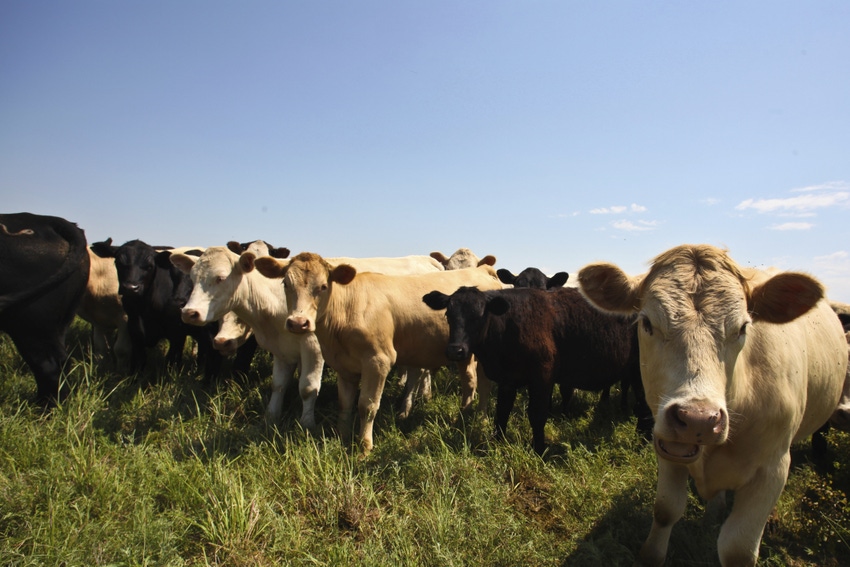Monitoring starch in cattle manure is often overlooked as an easy way to measure diet efficiency.
November 5, 2019

Measuring the amount of starch in cattle manure is essential to keeping track of efficiency and capturing opportunity cost in any operation, according to an announcement from Rock River Laboratory.
Most of the time, efficiency is measured by the feed-to-gain ratio, but seldom is the amount feed that passes through cattle to the manure measured, the announcement said. Fecal starch is just that — the amount of starch that is not digested and, thus, not utilized.
“Any starch in manure is literally money wasted,” said Mark Kirk, Rock River Laboratory business development and customer relations manager. “It’s like putting fuel in your truck and pouring out what is left in the tank at the end of the day only to refill it the next day.”
Measuring fecal starch is an inexpensive and easy process but not the most glamorous task of the day, Rock River Laboratory said. Most forage labs provide specific, easy-to-follow protocols and specific containers for submitting fecal starch samples for measurement.
“To begin, take 10-20 half-cup subsamples per pen, depending on pen size,” Kirk explained. “Gather subsamples from a good distribution of the freshest piles, and be careful not to scrape the ground when sampling.”
Put all of the pen’s subsamples into a bucket, mix well and then pour into the pre-labeled manure container to the "fill to" line. Kirk cautioned that samplers should “use lab-supplied sample submission containers. Do not use forage sample bags or Ziploc bags to submit manure samples. In these bags, the manure sample just becomes a manure bomb.”
The beef fecal starch analysis results provide dry matter (DM) percentage, crude protein percentage and starch as a percentage of DM.
“At Rock River Laboratory, the report then calculates an apparent total tract starch digestion (TTSD) based on a research-backed equation” that was published in the Journal of Animal Science in 2007, the company said.
Based on four years of data, Rock River Laboratory determined the goal, median and minimum recommendations for the fecal starch percentage of DM and the percentage of TTSD. “The recommended goal is based on the top 85th percentile, and the minimum is the bottom 15th percentile,” Kirk explained.
Those recommendations include: a goal of 2.9% fecal starch and 97.7% TTSD, a median of 7.5% fecal starch and 95.2% TTSD and a minimum of 18.4% fecal starch and 87.0% TTSD.
“For an animal with a 20 lb. dry matter intake of a ration made up of 45% starch, every three-unit change in fecal starch corresponds to about 1.5 units different TTSD,” Kirk said. “This boils down to about a half-pound of undigested corn grain per head per day for every three-unit difference in TTSD.”
A decrease in TTSD from 95% to just 92% in 1,000 head of cattle is equivalent to 500 lb. of wasted corn each day, Kirk said, adding that this represents an opportunity cost of more than $13,000 per year.
There are several ways to improve TTSD. Kirk suggested that “for those feeding corn grain, make sure you have adequate grind particle size. The finer the grind, the higher the ruminal digestibility and, therefore, the greater TTSD.”
Considering other starch sources is another way more complete digestion can be realized. “Steam-flaked corn, wheat and barley each have less density than dry-ground corn and hang in the rumen longer, allowing for greater utilization by the animal,” Kirk said.
Another option he recommended is to feed fermented starch sources like high-moisture corn or corn silage.
Keeping track of fecal starch is good way make sure that all of the potential is captured from beef rations. It is often overlooked as an easy way to measure the efficiency of the diet and a great investment with potential big returns.
Founded in 1976, Rock River Laboratory is a family-owned laboratory network that provides production assistance to the agriculture industry through the use of advanced diagnostic systems, progressive techniques and research-supported analyses.
Source: Rock River Laboratory, which is solely responsible for the information provided and is wholly owned by the source. Informa Business Media and all its subsidiaries are not responsible for any of the content contained in this information asset.
You May Also Like


.png?width=300&auto=webp&quality=80&disable=upscale)
